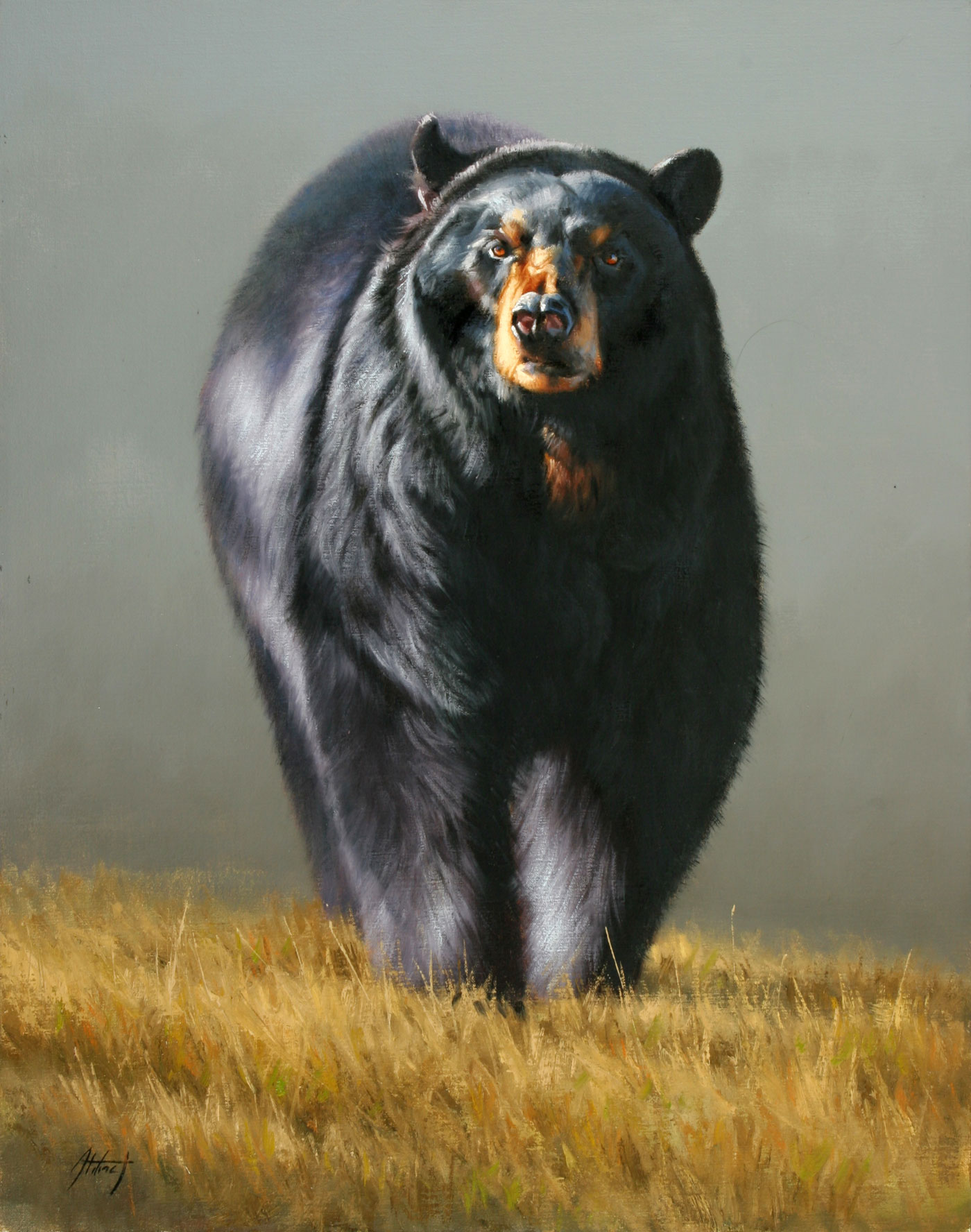Black Bear
| Species | bear |
| No. Appearing | 1–4 |
| Behaviour | subsocial |
| Range | alpine, subterannean, taiga, woodland |
| Size | 3½ ft. at withers; stands 6 ft. tall |
| Weight | 525 lbs. |
| Intelligence | 2 |
| Armour Class | 7 |
| Hit Dice | 3+3 |
| Action Points | 6 |
| Max. Stride | {{{stride}}} |
| THAC0 | 19 |
| Hp/Die | d10 |
| Attack Forms | 3: two claw; bite |
| Damage | claw (2-7); bite (4-10) |
| Special Attacks | maul |
Black bears are native to the New World, recognisable by their relatively small stature and remarkable abundance, boasting the largest population of any bear species. These bears are typically found in forested areas though they are known to stray into the edges of human-inhabited regions. During winter, they enter hibernation, which can last anywhere from three to eight months depending on their location and the severity of the climate.
Contents
Known for their extraordinary agility, black bears can perform intricate tasks such as opening doors or removing pot lids with surprising dexterity. They are also adept climbers, easily scaling large trees, and their physical strength is formidable. A black bear can overturn objects as heavy as its own body weight using just one foreleg. Despite their bulk, some individuals reaching up to 900 pounds, these bears can move with impressive speed and efficiency.
In combat, a black bear focuses its claw attacks on a single defender while potentially using its bite to target another. If both claws strike the same defender, the bear secures a grip, mauling its target for an additional 2–12 points of damage. Once the mauling is complete, the bear releases its prey but may attack them again in the following round if the situation persists.
The fur of a black bear is soft and dense, distinct from the shaggy coat of its brown bear relatives. While black bears are usually dark in colour, rare albino individuals have been documented. Over time, these bears have been hunted for their pelts and meat but hold a deeper significance in some humanoid cultures of the New World where they are venerated as animistic spirits.
Encounters
Black bears are most often encountered while foraging. Although they prefer berries and fruits, they are opportunistic and will scavenge meat or supplies from humanoid camps if food is left unguarded. In subterranean encounters, a black bear is likely hibernating. If disturbed during this vulnerable period, it will defend itself fiercely, intending to drive off intruders.
Between May and June, black bears are particularly dangerous as mothers travel with their young and are highly protective. They exhibit extreme aggression toward any perceived threat. Although black bears are territorial, they can coexist near humanoid settlements. They often rely on intimidation, such as bluff charges or aggressive posturing, to deter intruders, but they will attack if provoked or if they feel their territory is under threat.
